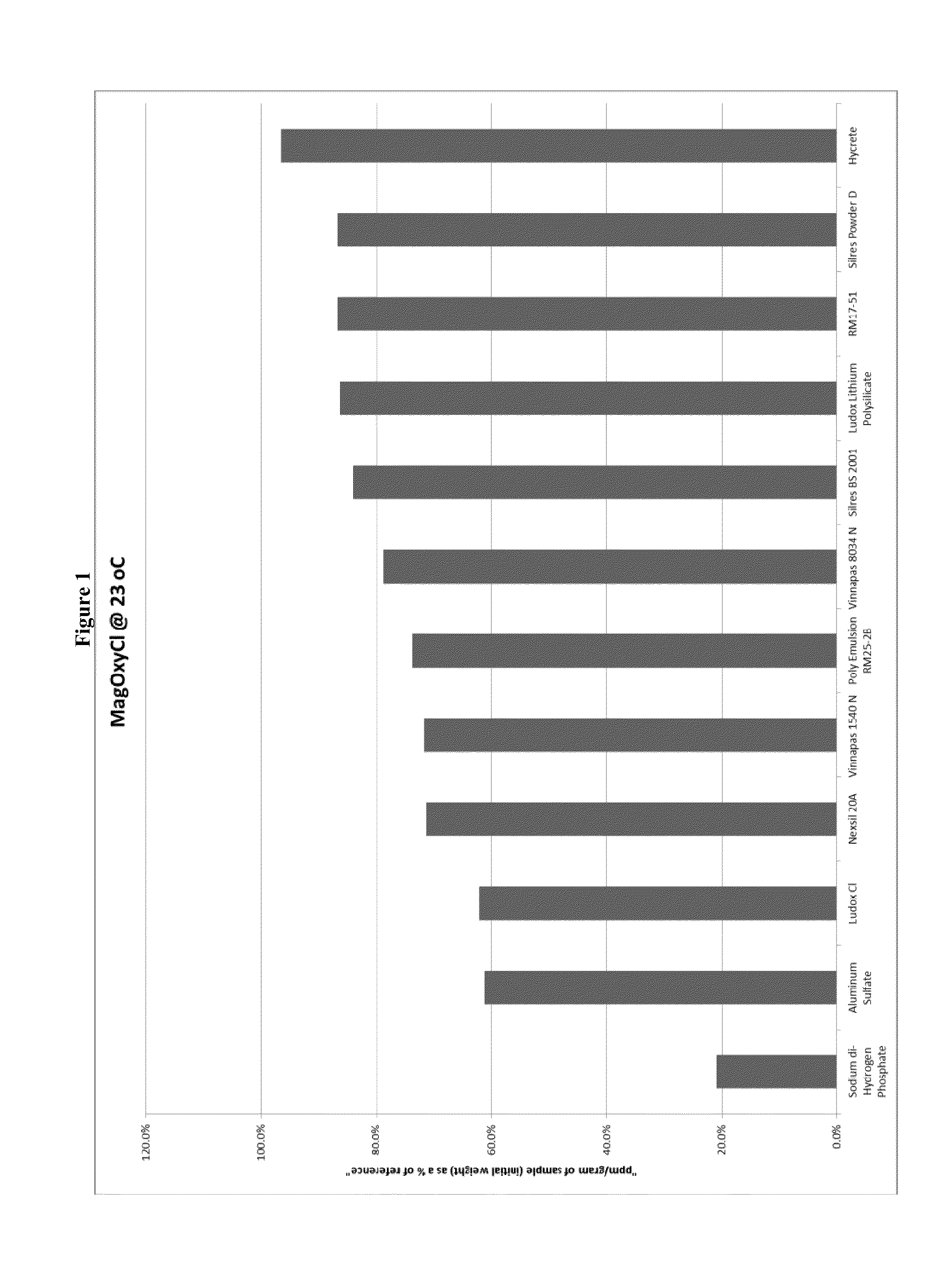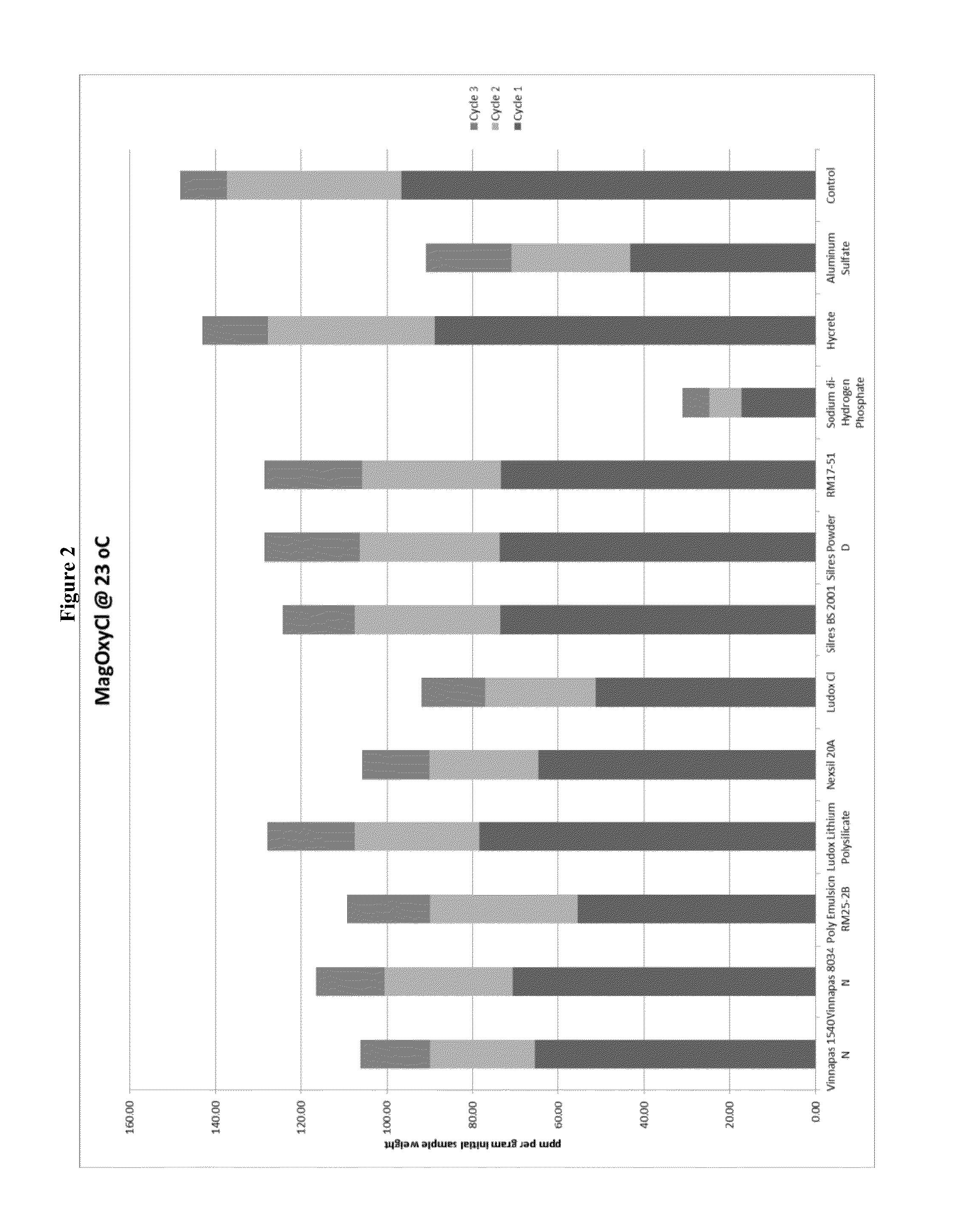Method and compositions for improving performance properties of magnesium oxychloride cements
a technology of magnesium oxychloride cement and performance properties, which is applied in the direction of climate sustainability, solid waste management, sustainable waste treatment, etc., can solve the problems of limited utility of moc cements as binder systems, and inability to meet the requirements of us
- Summary
- Abstract
- Description
- Claims
- Application Information
AI Technical Summary
Benefits of technology
Problems solved by technology
Method used
Image
Examples
Embodiment Construction
[0019]In an effort to address the inherent issues associated with Magnesium OxyChloride (MOC) cements and concretes, a multitude of experiments were run to find the answer to these age old problems. Therefore, various MOC mix designs were tested with molar mix ratios of Magnesium Oxide:Magnesium Chloride:Water ranging from about 1:1:7 to about 10:1:22. The most typical ratios commonly used for MOC cements range from 3, 5 and 7:1 ratios of MgO:MgCl2 and are referred to as a 3 phase, 5 phase and 7 phase MOC cement mix. As is known, the 5 phase formed includes a MgO:MgCl2:H2O molar ratio of 5:1:13, with a slight excess of MgO and an amount of water as close as possible to theoretical required for formation of the 5 phase and hydration of the excess MgO to form Mg(OH)2. There are a variety of grades of magnesium oxide that are effective in these MOC cements that range from light burned through dead burned grades, and calcined form natural or synthetic magnesite sources. As an illustrati...
PUM
| Property | Measurement | Unit |
|---|---|---|
| molar ratio | aaaaa | aaaaa |
| compressive strengths | aaaaa | aaaaa |
| RH | aaaaa | aaaaa |
Abstract
Description
Claims
Application Information
 Login to View More
Login to View More - R&D
- Intellectual Property
- Life Sciences
- Materials
- Tech Scout
- Unparalleled Data Quality
- Higher Quality Content
- 60% Fewer Hallucinations
Browse by: Latest US Patents, China's latest patents, Technical Efficacy Thesaurus, Application Domain, Technology Topic, Popular Technical Reports.
© 2025 PatSnap. All rights reserved.Legal|Privacy policy|Modern Slavery Act Transparency Statement|Sitemap|About US| Contact US: help@patsnap.com



